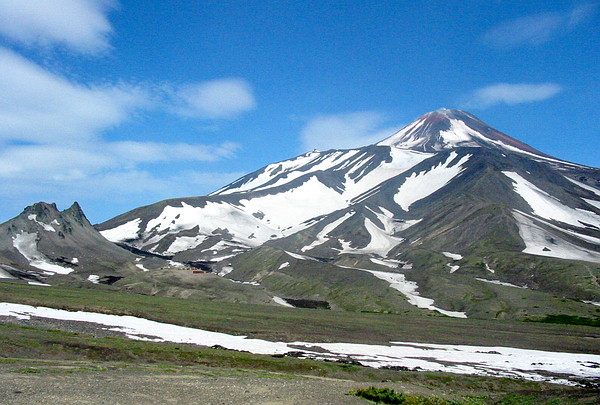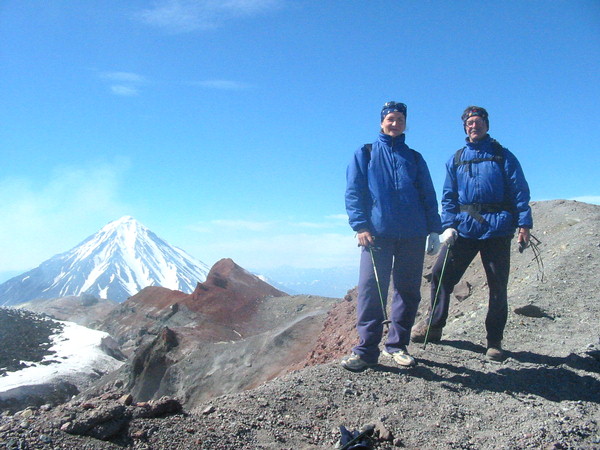|
Avacha volcano The volcano walk is on a single trail,
where members can walk as far as they wish and then return down
the same trail. People can walk at their own pace, but should avoid
walking alone; in case of accidents as trivial as a sprained ankle,
it is essential to be in groups of at least three. The camp is at
an altitude of about 950 m, and Avacha's summit is at 2741 m. The
climb to the rim of the summit crater involves a climb of nearly
1800 m. An easier option is to aim to reach the shoulder on the
old crater rim, which offers a lovely stretch of scenic walking,
and requires a climb of about 1100 m. The summit crater yawned hundreds
of meters deep until 1991, when it was filled with andesite lava.
The black lava now forms a gentle dome - it is the fresh top of
a classic plug dome. Steam rises through its fissured surface, and
there are even more fumaroles and solfataras round its edge, at
the contact with the crater walls of red pyroclastics. Walk round
the rim to the left; giant crescent flow ribs mark the lava's surface
where it moved sluggishly east and flowed over the lowest point
on the old crater rim. It flowed for a kilometer down the volcano
flank, but was so viscous that it came to rest on an angle of nearly
45°. Climbing over the blocky andesite is not easy, but a little
scrambling reaches some active vents lined with sulphur crystals.
The rim to the right overlooks slopes of sulphur deposits, but soon
reaches the lava overflow. There are fine views of Koryaksky and
all points beyond. |

